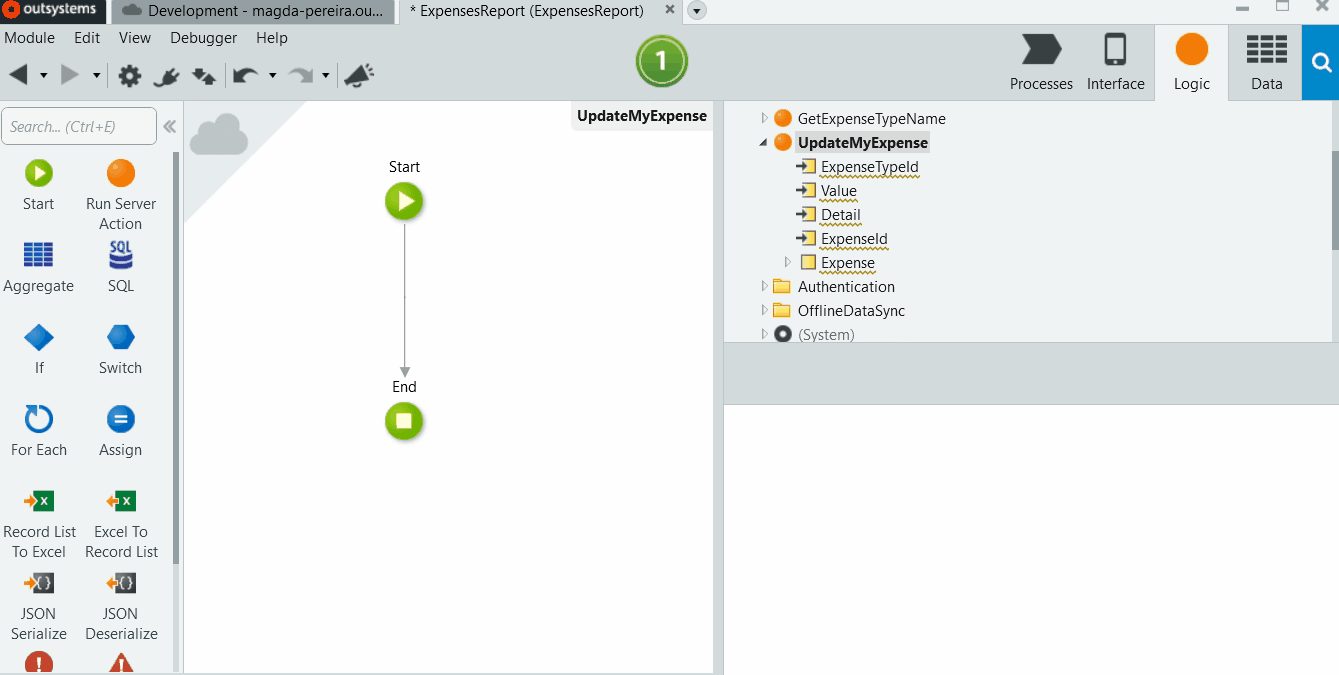Digital transformation poses a complex array of challenges. Businesses around the world are turning
to low-code to streamline processes and reduce Time to Market.
Tag along for a journey back in time. Remember that blissful age before COVID-19? Then it happened.
Businesses that were almost exclusively offline suddenly had to digitize operations. Some were not the least bit prepared. As if moving workers to work-from-home positions wasn’t challenging enough, team communication had to be revised. Product development was put on hold. And the Time to Market of innovations increased.
At the same time, peoples’ lives changed, meaning businesses had to adapt, fast. The strain on digital platforms grew, and IT teams felt the pressure.
COVID-19 soon became the biggest driver of digital transformation in recent years. The pandemic triggered a profound shift in the way companies work. Business leaders found themselves under intense pressure to cope.
So, how did savvy companies respond?
Enter Low-code
Fast forward to today.
Companies are rediscovering low-code, a software development approach that enables the delivery of applications faster and with minimal hand-coding.
Low-code platforms are a collection of tools that enable the visual development of applications through a graphical interface. They enable developers to skip hand-coding, speeding up the process of getting an application to production.

Low-code isn’t as new as you might think
However revolutionary, low-code is not a new concept. In computing years, some might even call it ancient.
If you worked in IT in the 1980s or 1990s, chances are someone pitched you a solution that promised to offload much of the demand for new applications to the users themselves. The grandfathers of low-code were computer-assisted software engineering (CASE) tools and early rapid application development (RAD) tools.
OutSystems, the first low-code platform for application development, was founded in 2001 by founder Paulo Rosado, amidst a tech bubble burst and a catastrophe such as 9/11. The goal? Take on the likes of SAP and Oracle. No easy feat, especially when you consider the facts of that year, but OutSystems powered through to raise $1 M that very same year.
However, the dream to tickle tech giants has become more realist in recent years, as low-code truly gained traction. For 2030, Forrester expects the low-code industry as a whole to be worth an estimate $B 187. OutSystems alone has a market cap of $30 billion, with more than 300 partners, including – you guessed it – us, here at Near Partner.
“Low-code” has become something of a buzzword. But what does it mean exactly?
What Low-code actually means
Low-code is an innovative approach to software development that involves minimal hand coding. Instead, low-code relies in visual development of apps through a graphic and intuitive interface.

This means almost anyone with a basic understanding of how software works can now “program” apps, websites, or back office apps.
Implementing low-code is revolutionising the way businesses operate, as it enables the software that usually took weeks or months to code and test to be deployed in a matter of days or hours, in some cases. Concepts turn into realities faster, drastically reducing Time to Market.
What is Time to Market, you ask?
Why businesses should care about Time to Market
Time to Market is the time it takes to go from initial idea to finished product – whether that is a product, a website, or an app.
Research has shown that new market entrants enjoy clear advantages in terms of market share, revenue, and sales growth. That makes Time to Market one of the essential product development KPIs or metrics – and a top priority for business leaders.
A project such as building a fully functional website for an already-existing business in the traditional way can take somewhere between three months to almost a year – depending on the business needs.
On top of that traditional development is pretty much restricted to skilled teams with in-depth coding knowledge. Low-code, on the other hand, is much more inclusive. It allows business users from all departments to get actively involved in the development and design of their apps, avoiding common pitfalls in app development that happen when there’s a big separation between the IT department and the rest of the business.
Time to Market is also significantly decreased, with the total timeline, from conception to deployment, ranging from a couple of months to a couple of weeks.
How low-code is changing businesses’ Time to Market
Everyone can learn code 101
To be able to make decisions regarding low-code programming, you do not need a computer science masters’ degree. One of the ways the adoption of low-code helps speed Time to Market is that all team members can actively participate in application design, with little to no coding skills.
The simple interface and intuitive design of low-code platforms streamline the process. Suddenly, designing applications becomes widespread across the organization: what if basic programming became as commonplace as creating a spreadsheet or a presentation deck?
Of course, changes, fine-tuning and overall customisation will need an experienced pair of hands and a low-code-trained brain, but the foundation can absolutely be laid by anyone in the team. This is where a digital transformation partner like Near Partner can help your business grow. Each solution is tailored to your needs, and a team of highly skilled individuals will build on what you already have to make scalable and secure.
If you’re looking of ways of upskilling your developing team, start with these 5 essential Software Engineer skills, according to CIOs.
Customer feedback can be quickly embodied
Customer and client feedback is a precious resource for all kinds of businesses. That’s why, when a business manages to get feedback, the smart thing to do is to listen and act accordingly.
By using a low-code platform, changes can be quickly implemented without having to rely heavily on the IT department.
It’s all about what drives company culture. At Near Partner, everything we do revolves around customer needs. Back in 2017, before we even had a name, we knew customer centricity was essential, as well as empathy, mutual help, and kindness to each other.
That is what Culture means to us, whether we’re working on a project, having a “Pouf Talk”, laughing at lunch, or fighting it out at a Ping-Pong game.
Testing gets easier
Testing new concepts can represent a huge chunk of the time spent developing an application, which ultimately slows down the Time to Market. Proper testing isn’t done overnight, and meanwhile the businesses can’t deliver – increasing Time to Market and adding costs.
With low-code, unit testing is dramatically reduced. Why? All the testing is done beforehand, since low-code platforms offer ready-to-use modules with all the respective functionalities up and running.

What if you want custom coding additions? Some unit testing might be needed then, but the cloud-based environment simplifies and streamlines testing even further.
Modular solutions enable iterative evolution
Expanding the functionalities of a website or application is also made easier with low-code. Its modular nature allows for iterative expansion and evolution, functionality-adding and, most importantly, it doesn’t affect the main website or app, or the Time to Market.
While the central part of the business continues to run smoothly, different departments can work on the expansion without disrupting the “business as usual”.
Low-code can help your business face today’s challenges and prepare for tomorrow’s. Streamlining development, integration, and deployment of applications helps drive business value, as it cuts back on development time, costs, and ultimately, Time to Market.
No more rogue IT
In large organizations, rogue IT or shadow IT refers to solutions deployed by departments other than the central IT department, to work around the shortcomings of the central information systems. Excel macros are the most common examples and represent around 19% of all rogue IT applications.
Rogue IT can be a barrier to innovation because it blocks the establishment of more efficient work processes. It is also a waste of time: since most “developers” of rogue IT actually work in HR, finance or marketing, development usually takes longer only to end up not being scalable to other departments. Also, usually it doesn’t comply with cybersecurity best practices.
Solution? Low-code allows users to create apps in different departments with an embedded single set of previously agreed-upon rules.
Rapid prototyping, faster launches
Low-code platforms enable businesses to whip up prototypes in a flash. Instead of months of development time, you can sketch out ideas, build prototypes, and launch MVPs (Minimum Viable Products) in weeks or even days, rather than months.
Agile adaptation to market trends
With low-code, businesses can quickly adapt to changing market trends and customer needs. Whether it’s adding new features, rolling out updates, or pivoting your entire strategy, low-code gives you the agility to move at the speed of business.
Effortless integration across platforms
Say goodbye to the headache of integrating unrelated systems and applications. Low-code platforms come with built-in integrations and APIs (Application Programming Interfaces) that make connecting to external services a breeze. Whether you’re syncing data from your CRM, integrating with third-party apps, or hooking into IoT devices, low-code makes it seamless.
Continuous innovation, zero downtime
Innovation never sleeps, and with low-code, neither does your business. Continuous deployment and DevOps practices enable you to roll out updates and new features with zero downtime. It’s like upgrading your car while you’re driving – smooth, seamless, and always moving forward.
How to use low-code in your business
These are the main steps to have your low-code game on point in no time.
1. Assess your needs
While low-code is very easy to get started with, it does requires teams to figure out what they need first. Identify the pain points and areas where low-code could make a real difference. Make a list of requirements the app should feature, as well as the data structure. Even though you can change it further down the road, it is worth giving it some thought beforehand to make deployment easier. List potential users and their use cases. And obviously, don’t forget to write down your business model for the app or how do you expect for it to pay back your investment.
2. Research platforms
Research and evaluate different low-code platforms. Compare features, such as ease of use, scalability, integration capabilities, security features, and pricing. Read reviews and find one that fits your needs – that you defined in the previous step. For example, check out OutSystems, a comprehensive suite of tools for rapid application development.
2. Build the database
Most apps start with data, and low-code apps are no different. Before working on the app’s design, prepare your tables and build the relations between data (you know, one book can have multiple authors, one author can write multiple books and so on). Make sure your database covers your use cases and user needs, at the least the ones you can think of for now, before proceeding.
3. Start small
Take a pragmatic approach and start with manageable projects to familiarize yourself and your team with the low-code platform. Once you’ve got the hang of things, you can ramp up the complexity.
5. Develop and test
Use the low-code platform to develop applications or automate processes based on the identified use cases. Test them thoroughly to iron out any kinks before rolling them out. Remember to test for different users before rolling out.
6. Integrate and deploy
Integrate your new apps with existing systems and databases as needed. Then, deploy them into the wild and let them work their magic.
7. Train your team
Get everyone up to speed with some solid training sessions. Make sure they’re comfortable with the platform and ready to hit the ground running.
8. Monitor and maintain
Keep an eye on things to ensure everything’s running smoothly. Address any issues that pop up and keep your apps in top shape.
9. Stay on top of things
Keep looking for ways to optimize and improve your applications over time. Gather feedback from users and stakeholders. Iterate on the existing applications or develop new ones using the low-code platform to further streamline processes and drive innovation.
3 Case Studies: accelerating business transformation with low-code
Let’s look at real world examples of how low-code is making development a lot easier.
1.Transforming paper-based workflows into efficient digital solutions
We worked with a leading IT Consulting Company to help their business clients get actionable information from physical documents using Outsystems. The fast-paced technological evolution around the world has increased the need for digitalization. But paper is still a reality in many companies, be it for legally binding documents, insurance details, complaints or invoices. Near Partner worked with a leading IT consulting house that processes and scans physical documents for business clients. With facilities around the world, this customer required a robust solution that could store, organize and present millions of documents efficiently.
Responding to such a large-scale challenge required a cross-functional team comprising members of both the Customer and Near Partner.
Our first goal was overcoming the unstructured nature of the scanned documents. Each had its own format, fields, heading and content, which had to be categorized and processed before the “real”automation work could begin. We also developed a new workflow that enabled the consultant’s customers to get the best of their database.
2. Revamping CRM and Complex Operations Processes with Salesforce
QMC designs wireless infrastructures that incorporate innovative technologies such as 5G, smart cities, IoT, virtual reality and artificial intelligence. They work with an array of customers, such as municipalities, shopping malls, hotels, hospitals, office buildings, and airports, to provide users with faster and more reliable communication capabilities. But this global presence comes with some unique challenges in managing complex sales processes and project implementation.
We deployed Salesforce and Sitetracker, two technologies that allowed the sales process to be managed with ease but required customization for QMC’s specific needs. With these two technologies in place, QMC could improve the sales process, which includes customer insights, business opportunities and established contracts. This automated way of working has replaced what was once a manual process. Data is no longer stored without structure, and a centralized database allows for better organization and automation. By developing a new workflow and application to support project implementation, our team improved tasks control, reporting and maintenance status. With this solution, onboarding of new employees vital to QMC’s growth follows a standardized path.
Partnering up: OutSystems x Near Partner
At Near Partner, we are big advocates of OutSystems, the leading low-code platform for the development of mobile and web applications.
Why OutSystems, you ask?
- OutSystems means development costs are much lower, and Time to Market is up to 4x faster.
- The OutSystems platform is intuitive and user friendly, and allows business users to build highly responsive applications, easily integrated with existing systems.
- It allows for custom features to be added to your project or evolve applications at the pace that your business needs them.
- At Near Partner you get personalised support with all the steps of development and maintenance.
- OutSystems provides a platform with advanced enterprise features to enable seamless growth.
You’d be right to guess that we are OutSystems fans. However, we don’t try to fit a square peg in a round hole. If your project requires something different, our team can find the right set of tools for your business development needs. Just give us a shout and board the digital train with us.
We’ll be happy to help you deliver great solutions while speeding up Time to Market.
Get a free consultation with one of our experts. Leave your email and we’ll get back to you promptly:





